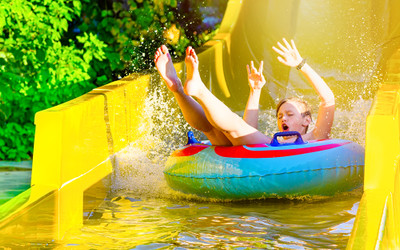Thrills and Spills: Know the Safest Way to Enjoy a Water Park Adventure
5th Jul 2023
Are you planning to take your family to a water park this summer? You wouldn't be alone. Millions of people visit the more than 1,000 water parks and resorts across the U.S. each year - and for good reason.
Water parks feature a range of inventive and exciting attractions meant to provide good, wet fun. What kid doesn’t love splashing in a colorful water playland?
In the competition to wow visitors, each water park develops signature rides and attractions. Families can find a range of water-based activities, from floating serenely down lazy rivers to surfing in a wave pool to plunging down 100-foot-tall waterslides.
However, water attractions justify some additional precautions. In addition to splash pools and float streams, You may also come across intense waves, water depths and rushing water that, while exhilarating, also present risks.
Injuries at Water Parks
A 2016 report by the Consumer Product Safety Commision, (one of the more recent studies on water park safety), indicates that more than 4,200 people a year were taken to the emergency room for injuries suffered on water slides. Injuries ranged from scrapes and broken limbs to concussions and spinal injuries.
Another report conducted by the New Jersey Division of Community Affairs found that “water park rides comprised 40% of the injuries sustained at amusement parks and carnivals in NJ over a five year period.”
Wave pools carry some of the biggest risks for little swimmers.

Preview the Water Park
Before taking your family to a water park, it’s a good idea to hop on the park’s website and review the attractions they offer. Some things to consider:
Is the park indoors or outdoors?
Indoor parks tend to be smaller and may operate year-round. The environment will be temperature controlled and you won’t have to worry about sunburn.
What attractions do they offer?
An aqua park will likely have different play areas that could include a splash pad, swimming pools, water playgrounds, tipping bucket, lazy river, surf simulator and water slides. Some will feature multiple water slides of varying heights, with exciting twists and turns.
Is your child ready?
Just because a child meets ride requirements, doesn’t necessarily mean they’re up for every experience. Children who are more timid around water may prefer to remain in tamer areas of the park.
Does your group include people of different ages, skills and interests?
Consider swimmers’ ages and abilities to determine whether your group needs to split up so everyone has a fun time.
Check out the website
The website for your water park destination is bound to have lots of beautiful color photos of each exciting attraction, along with a description of the ride and rider safety information. Study the minimum height restrictions, weight restrictions, lifejacket and supervision requirements. Check the water slide height and length, water depth, speed and “thrill level.” Use the information to gauge whether this attraction is right for everyone in your family.

Water Park Safety Tips
For visitor safety, a water park should have qualified lifeguards on duty and a first aid station. There will likely be showers available to clean off before and after swimming.
Life vests are recommended by the International Association of Amusement Parks and Attractions (IAAPA) and should be available free of charge. They are important safety gear for young swimmers, poor swimmers and visitors who are planning on participating in high-speed, high-thrill water tubes, slides and water rides. Bring your own if you are unsure of availability and fit.
In addition, there are other ways parents and guardians can make sure everyone stays safe at the water park.
- Read and follow the rules posted for each water ride. Teach kids to follow the rules, too.
- Limit children to attractions meant for their age, height and swim experience. A child who is too small for a ride could be seriously injured.
- Use the buddy system and insist children stick with their partners for the day.
- Don’t run. A slip could result in a serious injury. Flip flops are not advisable and swim shoes may not be permitted in some areas.
- “Don't assume kids are safe in the water just because they know how to swim,” says UWHealth. “Lots of bodies, heat, fatigue and strong currents can create a risky situation for unaccompanied kids.”
- Watch your kids closely in wave pools. Waves and the large number of people bobbing in the water can make it hard to spot a swimmer in trouble.
- Stay within arm’s reach, “keep your eyes on your children, and strongly consider putting your swimmer in a life jacket,” notes the American Academy of Pediatrics.
- Correctly use life jackets or helmets whenever they are indicated for a specific attraction.
- If the waterpark is outdoors, remember to reapply sunscreen often and stay hydrated.
- Have a hat and protective clothing available for when you’ve had enough sun. says the Red Cross.
Water Parks Should be Fun!
Water parks are typically a safe place to cool off on a hot summer day, have fun in the water, enjoy new experiences and exciting rides. Just be sure to use common sense, stay vigilant and follow the rules to keep your adventure injury-free.
